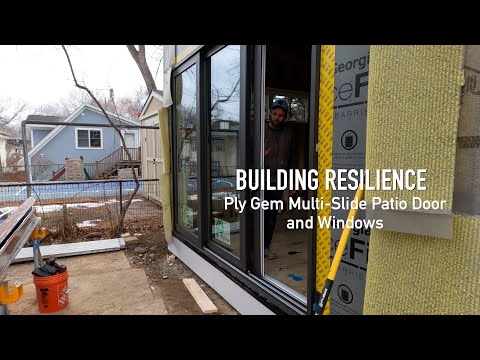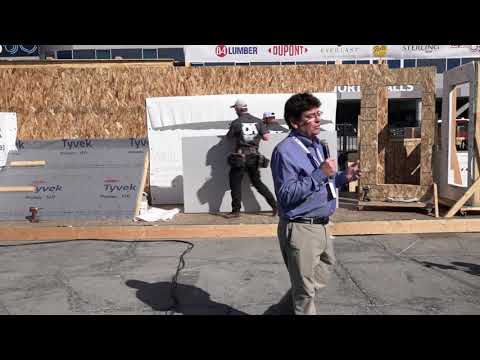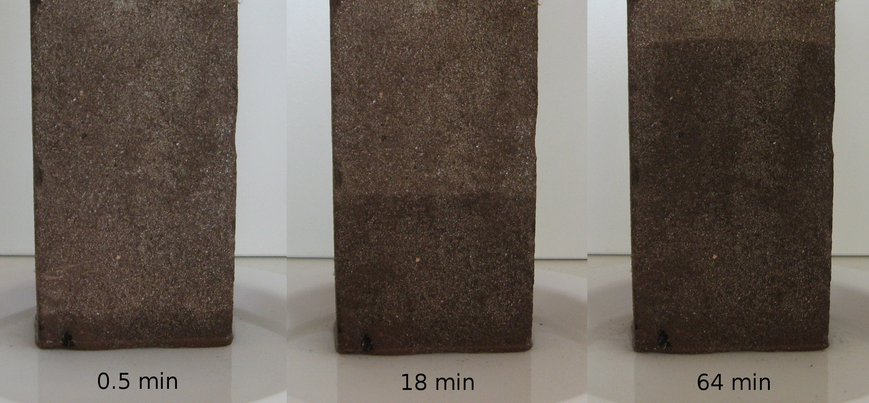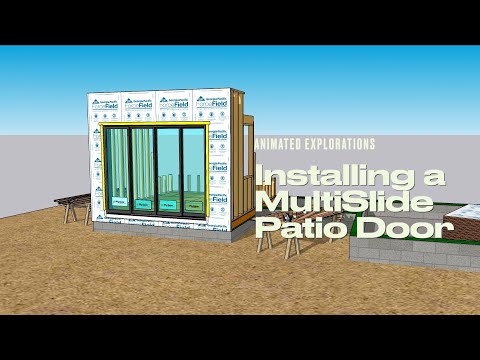Hanging Drywall with two types of drywall lift: a Ceiling Lift and a Hang Pro Drywall Lift. Myron Ferguson explains the nuances of using each type and when each drywall list makes the most sense for drywall hanging projects.
Transcript: I'm going to attempt to hang this 12 foot long piece of drywall on that wall right there. Um, I've already got it loaded on the lift. I did manage to have the lift over here in front of this pile of drywall, and I put it on the cradle, and I did wheel it over here, so I didn't have to actually drag the piece of drywall over here. But this is kind of a unique room because it's pretty open.
Challenges with the Ceiling Lift
I'm going to try to use this to hang the top sheet on this wall. Keep in mind, I've already had to actually lift the sheet and put it on this cradle, so I've already lifted a 12 foot piece of drywall 39 inches off the ground and put it on that cradle.
Some of the issues that I have with using the ceiling lift to hang something on a wall is eventually when I go to actually hang this, I have to tip the drywall off the cradle and lean it against the wall. So, I'm pushing it off of that, and it's only hanging on these bottom little clips. The other thing is, it's a little hard to maneuver around with the three wheels. They all pivot in opposite directions, so it's a little bit cumbersome. But I think it can be done. I'm just going to give it a try and let you see how it works.
The first thing I'm going to do is try to get close to the wall. I want to make sure I'm reasonably tight into this corner because it doesn't move side to side that easily. But I can't have it too tight; it'll pull that material off the wall.
Okay, now I've got to tip it toward the wall and then crank it up pretty close to the ceiling height. I'm going to tip the top in. What I have to be cautious of is going to want to push this lift backward. So, I want to make sure I've got my foot on here so it doesn't push the lift back as I do that. So, now I got it close to the wall.
I'm taking my right hand, and I'm just turning the handle slightly to get it going up. Keep in mind it will stay, but you can see that the more pressure I put against that ceiling, the more it wants to kick back. So, that's something you got to be really careful of.
This worked very well here because the wall is longer than this piece of drywall. So, I was able to get it into the room easily and make my little maneuvers before I lifted it up. If this was a wall and that I was fitting this exact length into, it'd be much more difficult because of the lack of maneuverability with a three-wheel base.
Now, I'm going to lower the cradle, and it'll swing into the wall. This will only hang the top sheet. It doesn't help you at all when you hang the bottom sheet, either. Let's try a tool specifically made for hanging drywall on walls.
Installing drywall with a Hang Pro drywall lift
This is a Hang Pro drywall lift for walls. It's made exclusively for hanging drywall on walls. It can hang the upper sheet and the bottom sheet. It has four wheels: the two coaster wheels across the front for side-to-side movement, and the back wheels are just there to actually use it as a hand cart type tool and help me to get the drywall closer to the wall.
The front little coaster wheels allow me to have side-to-side movement to make little adjustments to get it placed exactly where I want it. So, first, I've got the lift right against the drywall on the wall, just lifting it slightly. I put it on the cradle, tipping it back towards the lift, just getting it off the ground just a little bit.
Now, I take the entire lift and put it against the wall. You don't want it tipping backward, because then all the weight will be pushing away from the wall. Right now, it's just going to glide right up over the insulation.
Hanging the bottom sheet with Hang Pro drywall lift
After I get it close to where I want it, I do want it tight in this corner because of the front coaster wheels. I'm able to just pull it to the left. There's enough play in the cradle that allows me to. I still attach it to a ceiling or walls that are a little bit out of plumb.
Now, I'm just putting it up nice and tight. And now I just go through, fasten the top edge, fing around the windows, and cut the windows out.
Afterward, a lot of people don't really know that you can hang the bottom piece of drywall on a wall with Hang Pro. All you do, similar to just hanging the ceiling, put it on the cradle. Now what I like to do is I like to crank it up above the other sheet and then lower it down into place.
So, I'm going to crank it up just a little bit and push it against the wall. Now you can see it's a little bit above the other panel. So, I'm going to lower it slowly down to where I want it.
Comparing Methods
Now, I'll check to see if it needs to go this way. It can go a little bit, but it's hitting in the bottom corner, so probably won't. And there you go. There's a 12T piece of drywall easily lifted and held into place even for the bottom panel.
Alright, I've got to lift the bottom panel up about a half inch. The traditional way to do this is with a footlift, and it can be done. But it's not as easy or as user-friendly as using the Hang Pro.
This is an interesting sheet, and I did struggle a little bit, but did I physically struggle? No, the lift did all the work for me. I had to do some maneuvering to get it to fit in here because there are some complicated circumstances.
The bottom sheet being hung there was not a good idea; this insulation is kind of poked out a little bit, so getting caught on that. But I've got it in place. I didn't do any lifting so far. I'm not doing any holding; the tool is doing all the work for me.
Now, I'm going to crank it up to the ceiling. I like the fit; it's tight into that corner. I'm going to check to see how it is over here. It's a little tight right here, so I'm going to go fasten up in this corner and then let this drop slightly in order to fit along that top wall.
So, there you go. Really, this would have been next to impossible for me to hang by myself. But I just took my time. I need to get this piece of drywall from that other room into here, and I'm working, like I said, I'm working alone. And I basically just kind of dragged it in here; there was no reason for me to lift it up high.
This drywall is quite durable; maybe I did scuff up the bottom edge slightly, but it doesn't matter. I got in here without doing a bunch of lifting; I got it right in place. And now I just need to lift it about a half inch so I can fasten it in place and have a little space along the floor.
The Hang Pro drywall lift is great for walls
One thing I really like about using the Hang Pro to hang the bottom sheet, to lift and hold the bottom sheet, is I have the ability to move it from side to side. In other words, I'm not only lifting it up, in this case, about an inch and a little over an inch in; I'm able to move it into this corner because I actually want to do a little—this first sheet here was a little short. So, I want to be able to slide it behind it to compensate for some of that mistake there. The ability to lift and hold but also the side-to-side movement that you don't get when you use a regular foo lift.











